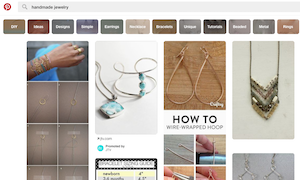No matter how well you set up your eCommerce site or store, customers are bound to have questions, complaints and challenges. How you handle those issues can send customers straight to your competitors or help you earn their loyalty for years to come.
When it comes to customer service, don't skimp. A strong investment in happy customers can earn big rewards for your online store in the form of repeat business, customer referrals and a strong brand image.
Research shows that repeat customers spend 67 percent more than new customers, according to marketing consultant BIA/Kelsey. Customer referrals and a compelling brand presence are also important ways to attract new business in an age of social media.
Whether customers are old or new, eCommerce sites can earn their trust and loyalty during "moments of truth." These are the few interactions, such as a mishandled purchase or damaged item, when customers are emotional about the outcome, reports McKinsey. “Superb handling of these moments requires an instinctive frontline response that puts the customer's emotional needs ahead of the company's and the employee's agendas," the organization states.
In short, consumers want to feel a sense of empathy, or a "human connection" from businesses, Jeanne Bliss, president of CustomerBliss, tells U.S. News & World Report. "Are you open and honest with the customer?" she asks. “Or do you make it complicated to understand the rules and policies of doing business?"
To help your eCommerce site prioritize customer satisfaction, here are three great tips from companies that consistently achieve top rankings for making customers happy.
1. Guarantee your product
Clothing retailer L.L. Bean promises to sell quality items that last. To back up that pledge, the company offers a lifetime guarantee on every purchase – even for items that simply get worn out from years of use. Most importantly, says “Frugal Rules" blogger John Schmoll, the retailer keeps its promise when presented with those returns.
Although smaller businesses may hesitate at the upfront cost of providing a lifetime guarantee, consider the lasting financial benefits: On average, loyal customers are worth up to 10 times as much as their first purchase, according to the White House Office of Consumer Affairs. And don't forget the marketing value of having happy customers -- and bloggers -- spread the word about your business to people they know.
2. Offer price protection
It's incredibly easy for online shoppers to compare prices between eCommerce businesses. If a competitor offers a better price, you can count on customers finding out. One way to give customers the confidence to stop clicking around and make a purchase from your site is to offer price protections for the items they buy.
Amazon offers a seven-day price protection policy on purchases directly fulfilled by the retailer. The eCommerce giant also offers to send a replacement item overnight if a purchase arrives in damaged condition. Considering that nine in ten unhappy customers will not willingly do business with you again, according to Lee Resources, Inc., a short-term price adjustment could certainly pay off in long-term satisfaction with your business.
3. Simplify returns
A strong return policy is great, but it's also important to make returns easy for already dissatisfied customers. Some 67 percent of customers check the returns policy before making a purchase and 92 percent of customers will make a future purchase from a business if returns are easy.
Online shoe retailer Zappos.com is known for its priority on customer service, including the ability to easily return items for free for up to a year. Over half of customers say it's important for online returns be hassle-free with no questions asked. Some 47 percent of customers also want an easy-to-print return label.
Make sure your eCommerce site or store also provides easy-to-find information on your site's return policies, with minimal steps to follow. Back that up with strong customer support via online FAQs and helpful employees empowered to answer questions and resolve complaints.
To build a strong base of loyal customers, make an investment in keeping them satisfied. After all, it takes 12 positive customer experiences to make up for just one negative experience, according to Parature. So be sure to give each customer a happy ending, and your business can have a great story to tell for years to come.
Ready to get started? Let's go.
Research shows that repeat customers spend 67 percent more than new customers, according to marketing consultant BIA/Kelsey. Customer referrals and a compelling brand presence are also important ways to attract new business in an age of social media.
Whether customers are old or new, eCommerce sites can earn their trust and loyalty during "moments of truth." These are the few interactions, such as a mishandled purchase or damaged item, when customers are emotional about the outcome, reports McKinsey. “Superb handling of these moments requires an instinctive frontline response that puts the customer's emotional needs ahead of the company's and the employee's agendas," the organization states.
In short, consumers want to feel a sense of empathy, or a "human connection" from businesses, Jeanne Bliss, president of CustomerBliss, tells U.S. News & World Report. "Are you open and honest with the customer?" she asks. “Or do you make it complicated to understand the rules and policies of doing business?"
To help your eCommerce site prioritize customer satisfaction, here are three great tips from companies that consistently achieve top rankings for making customers happy.
1. Guarantee your product
Clothing retailer L.L. Bean promises to sell quality items that last. To back up that pledge, the company offers a lifetime guarantee on every purchase – even for items that simply get worn out from years of use. Most importantly, says “Frugal Rules" blogger John Schmoll, the retailer keeps its promise when presented with those returns.
Although smaller businesses may hesitate at the upfront cost of providing a lifetime guarantee, consider the lasting financial benefits: On average, loyal customers are worth up to 10 times as much as their first purchase, according to the White House Office of Consumer Affairs. And don't forget the marketing value of having happy customers -- and bloggers -- spread the word about your business to people they know.
2. Offer price protection
It's incredibly easy for online shoppers to compare prices between eCommerce businesses. If a competitor offers a better price, you can count on customers finding out. One way to give customers the confidence to stop clicking around and make a purchase from your site is to offer price protections for the items they buy.
Amazon offers a seven-day price protection policy on purchases directly fulfilled by the retailer. The eCommerce giant also offers to send a replacement item overnight if a purchase arrives in damaged condition. Considering that nine in ten unhappy customers will not willingly do business with you again, according to Lee Resources, Inc., a short-term price adjustment could certainly pay off in long-term satisfaction with your business.
3. Simplify returns
A strong return policy is great, but it's also important to make returns easy for already dissatisfied customers. Some 67 percent of customers check the returns policy before making a purchase and 92 percent of customers will make a future purchase from a business if returns are easy.
Online shoe retailer Zappos.com is known for its priority on customer service, including the ability to easily return items for free for up to a year. Over half of customers say it's important for online returns be hassle-free with no questions asked. Some 47 percent of customers also want an easy-to-print return label.
Make sure your eCommerce site or store also provides easy-to-find information on your site's return policies, with minimal steps to follow. Back that up with strong customer support via online FAQs and helpful employees empowered to answer questions and resolve complaints.
To build a strong base of loyal customers, make an investment in keeping them satisfied. After all, it takes 12 positive customer experiences to make up for just one negative experience, according to Parature. So be sure to give each customer a happy ending, and your business can have a great story to tell for years to come.
Ready to get started? Let's go.
 Lisa Wirthman Lisa is a freelance journalist covering women, business, policy and social good.
Lisa Wirthman Lisa is a freelance journalist covering women, business, policy and social good.





